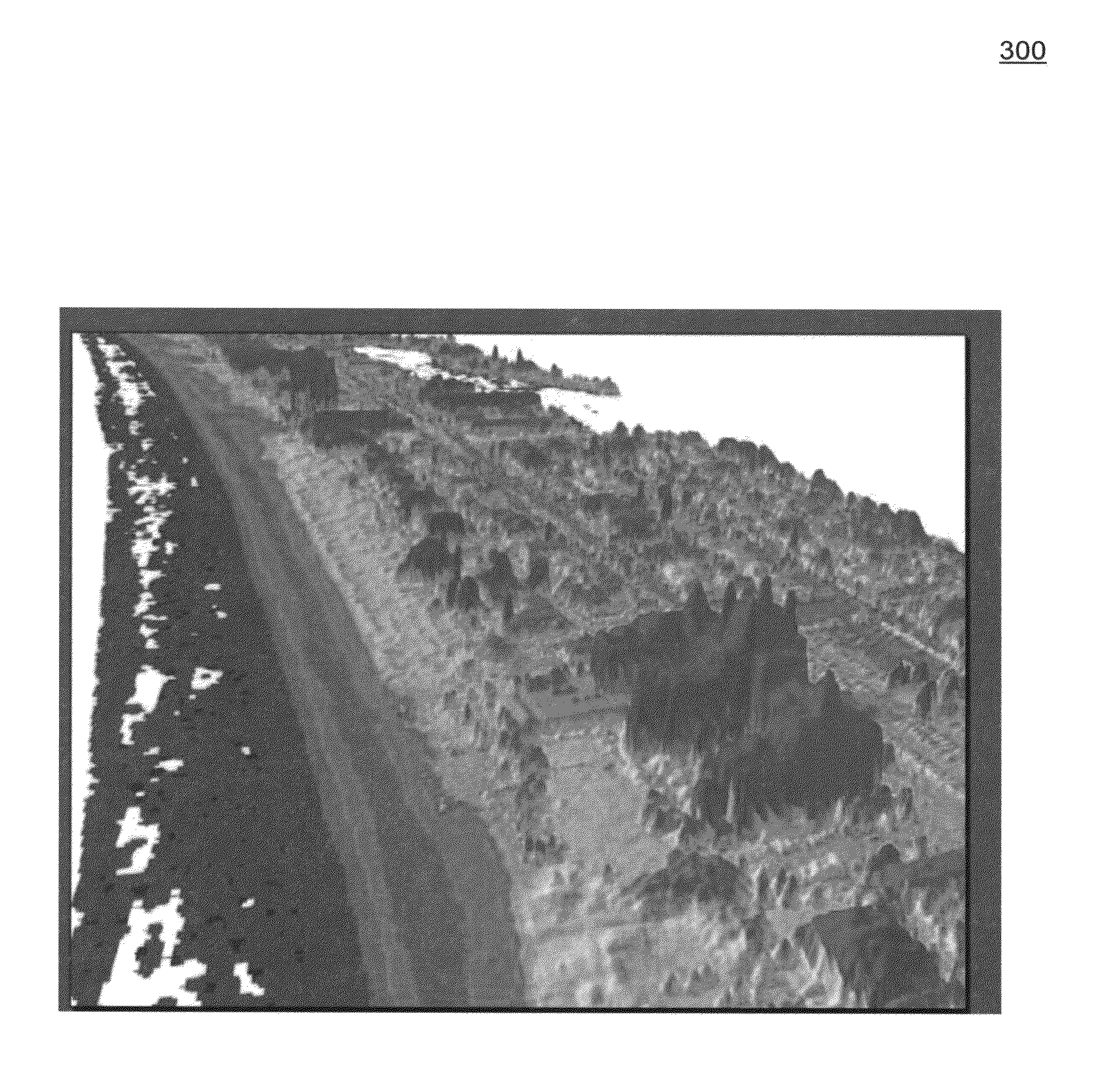Methods for identifying rooftops using elevation data sets
a technology of elevation data and methods, applied in the field of elevation data analysis, can solve the problems of difficult to obtain information, inability to reliably determine the height and location of the roof, etc., and achieve the effect of avoiding obscuring the purpos
- Summary
- Abstract
- Description
- Claims
- Application Information
AI Technical Summary
Benefits of technology
Problems solved by technology
Method used
Image
Examples
Embodiment Construction
[0029]FIG. 1 provides a method 100 for identifying building unit rooftops, according to an embodiment of the invention. Method 100 begins in step 110. In step 110, a light detection and ranging (LIDAR) data set for a geographic area of interest is accessed. The LIDAR data set is gridded into a bare earth layer and a first return layer, which may be referred to generally as a surface layer. The example embodiments throughout the specification refer to LIDAR data sets. The invention is not limited to the use of LIDAR data. Rather, other types of elevation data can be used, such as, for example, data collected by RADAR or a variant of three-dimensional photography. Additionally, in embodiments the bare earth layer and first return layer (or surface layer) data may be obtained through different measurement techniques.
[0030]LIDAR describes a profiling system that produces location and elevation data to define the surface of a geographic area and the heights of above ground features. LIDA...
PUM
 Login to View More
Login to View More Abstract
Description
Claims
Application Information
 Login to View More
Login to View More - R&D
- Intellectual Property
- Life Sciences
- Materials
- Tech Scout
- Unparalleled Data Quality
- Higher Quality Content
- 60% Fewer Hallucinations
Browse by: Latest US Patents, China's latest patents, Technical Efficacy Thesaurus, Application Domain, Technology Topic, Popular Technical Reports.
© 2025 PatSnap. All rights reserved.Legal|Privacy policy|Modern Slavery Act Transparency Statement|Sitemap|About US| Contact US: help@patsnap.com



